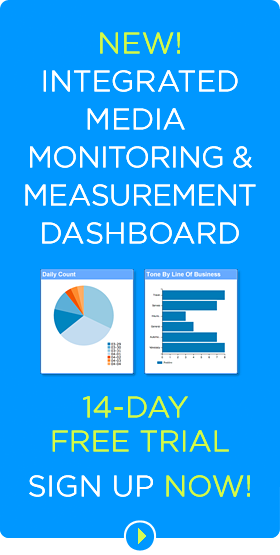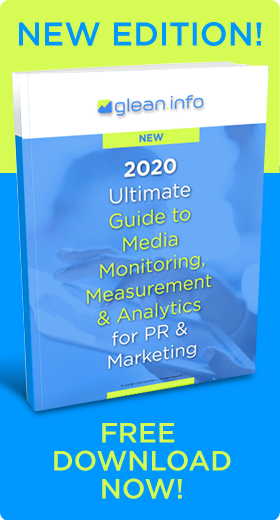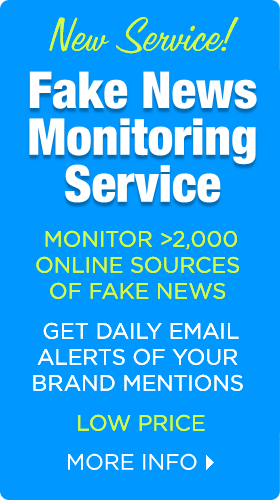 PR measurement guru Katie Paine, CEO of Paine Publishing, offers media measurement predictions for 2018 in her latest article in the The Measurement Advisor newsletter. These are three of leading predictions along with supporting research and commentary.
PR measurement guru Katie Paine, CEO of Paine Publishing, offers media measurement predictions for 2018 in her latest article in the The Measurement Advisor newsletter. These are three of leading predictions along with supporting research and commentary.
More Listening to Customers
More corporations will recognize the value of listening to customers. More companies will understand that keeping customers through superb customer service costs less than winning new customers.
“Customer support has long been underfunded, but that will change in 2018 as data showing its importance comes in,” Paine predicts
Other experts agree that more corporations will employ social media listening to identify customer complaints and questions that call for responses. Social media has emerged a premier customer service channel. Almost half (47 percent) of customers prefer to contact companies through social media, according to a Sprout Social survey last year. While 55 percent prefer in-person contact, 42 percent use email and only 35 percent are likely to make a phone call. Brands receive 146 percent more social messages needing responses than they did three years ago. However, they respond to only 1 in 10 on average.
Because of the rise of social media as a customer service tool, it’s essential for public relations, which often oversees social media monitoring, share customer complaints with the customer service department at least daily – and preferably more frequently. Better yet, PR should arrange with the social media monitoring service to send copies of all alerts directly to customer service.
“Delight your customers by using social for support. You’ll be ahead of the game!” urges Ash Read at Buffer. “With more and more customers turning to social media channels for support issues, it feels like there’s still great opportunity for businesses, individuals and solopreneurs to stand out and build advocacy by providing outstanding support on social.”
Bots to Prove Troublesome to Measurement
Automated social media accounts, or bots, will remain ubiquitous and cause measurement headaches. PR professionals often track follower numbers and engagement metrics. But many followers are not real people and their social media activity is automated.
“The Russians aren’t the only ones stirring up trouble with troll farms and bots attacking their enemies,” Paine warns. “Your competitors have access to all the same tools. So before you brag about your ‘increased engagement’ numbers, make sure it’s the kind of engagement you want.”
Bots represent 15 percent of Twitter users, or 48 million accounts, and account for about half the site’s traffic, researchers estimate. Fake automated accounts are also common on Instagram, Facebook and other social media network.
PR can limit the damage of bots by learning how to spot possible bots, using automated tools to audit accounts, and steering clear of dubious schemes to quickly gain large numbers of followers.
PR Measurement Becomes More Sophisticated
PR will come under increasing pressure to show the business value of communications. Communications professionals will need to calculate its contribution to the bottom line in terms of business goals and not reach and impressions, Paine says. Metrics like cost per conversion and cost per engagement will dominate PR dashboards in 2018 and put an end to AVEs. For nonprofit organizations, cost per new donor and cost per engagement will replace anachronistic goals like increased awareness.
Others agree that PR measurement practices will continue to improve. Media measurement tools and a greater emphasis on analytical skills will bring greater recognition of the value of PR. In addition, measurement will expand to encompass additional strategies such as podcasts, videos and influencer marketing.
All marketing and PR measurement of earned, owned, paid and social media will be integrated into a single online dashboard that can be parsed to meet the needs of multiple departments. That will provide an opportunity for PR to establish itself as the hub of key data that affects strategic decision-making.
PR Shares Results and Data across the Organization
PR typically keeps close hold over media monitoring and measurement data. However, news and social media monitoring and measurement results and data obtained by PR are useful to many other departments within an organization, including marketing, product management, customer service, competitive intelligence, and country managers. In 2018, more PR managers are expected to better share media monitoring information with other departments. Some media monitoring and measurement services such as Glean.info enable clients to segment queries and results to make it easy to share information across departments. That type of information sharing will help PR gain greater credence within the organization.
Bottom Line: Measurement experts predict that sophisticated PR measurement practices will become more widespread in 2018 due to improved media monitoring tools, more sophisticated metrics, and more pressure to prove the value of PR. In addition, PR teams who manage social media monitoring tools can provide considerable customer service benefits by sharing customer complaints with customer service departments – and by sharing results across the organization. However, the ongoing prevalence of automated fake social media accounts may complicate the validity of media measurement data.
William J. Comcowich founded and served as CEO of CyberAlert LLC, the predecessor of Glean.info. He is currently serving as Interim CEO and member of the Board of Directors. Glean.info provides customized media monitoring, media measurement and analytics solutions across all types of traditional and social media.




